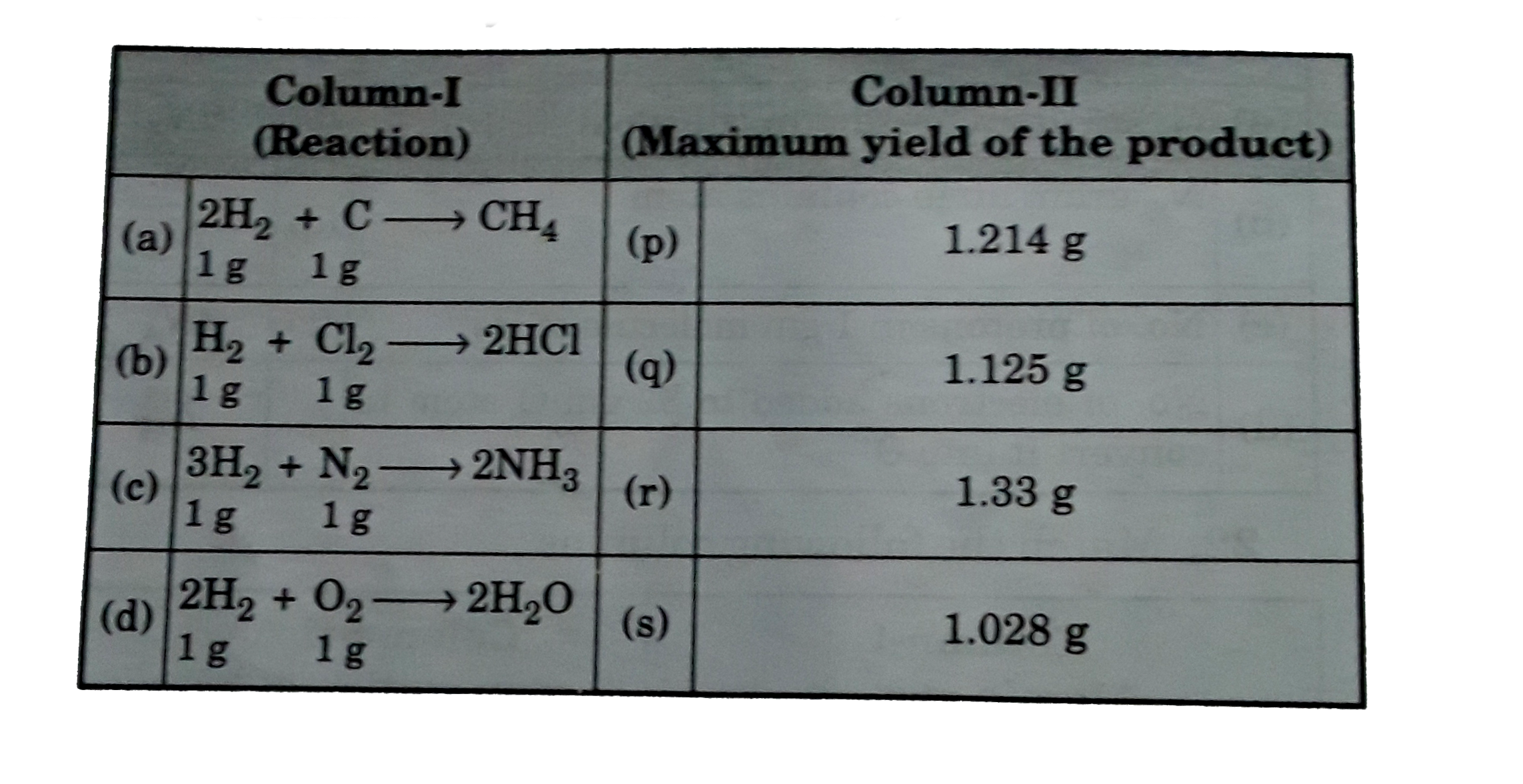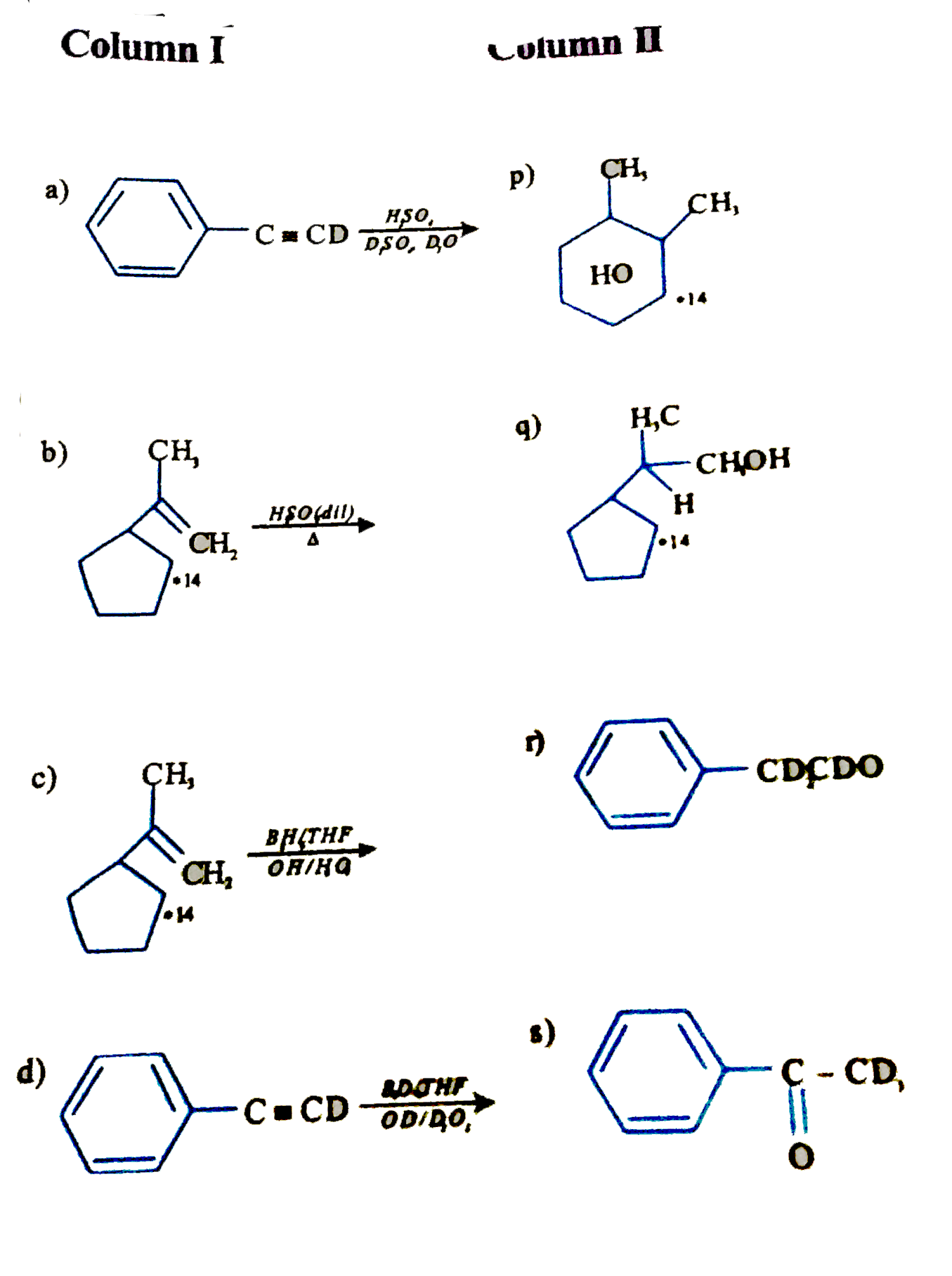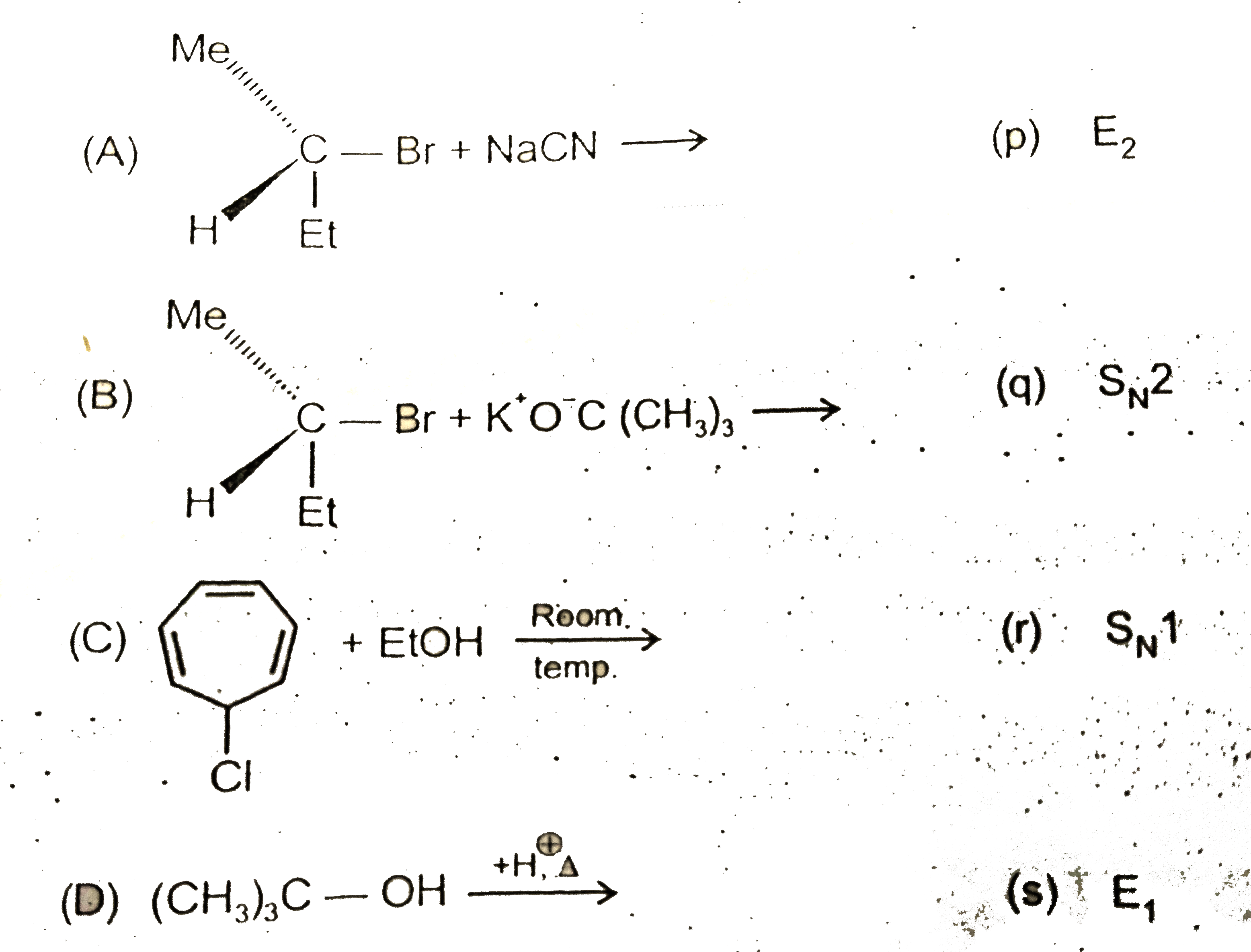Match the column-I (Reaction) with column-II (maximum yield of the product)

Text Solution
The correct Answer is:(a→r);(b→s);(c→p);(c→s);(d→q)
|
Topper's Solved these Questions
- MOLE CONCEPT, STOICHIOMETRY & CONCENTRATION TERMSBook:GRB PUBLICATIONChapter:MOLE CONCEPT, STOICHIOMETRY & CONCENTRATION TERMSExercise:Subjective type
Explore 145 Videos
- MOLE CONCEPT, STOICHIOMETRY & CONCENTRATION TERMSBook:GRB PUBLICATIONChapter:MOLE CONCEPT, STOICHIOMETRY & CONCENTRATION TERMSExercise:Comprehension#112
Explore 1 Video
- ISOMERISMBook:GRB PUBLICATIONChapter:ISOMERISMExercise:SUBJECTIVE TYPE
Explore 67 Videos
- NOMENCLATURE AND CLASSIFICATIONBook:GRB PUBLICATIONChapter:NOMENCLATURE AND CLASSIFICATIONExercise:Subjective Type
Explore 24 Videos
Similar Questions
Knowledge Check
Match the reactions in Column I with the types of products/the use of products in Column II.
 APQRS1324BPQRS3241CPQRS4312DPQRS4123
APQRS1324BPQRS3241CPQRS4312DPQRS4123
Match the reactions listed in column(I) with characteristic(s) of the products/typee of reactions listed in column(II).
 .
.
View SolutionMatch the reaction in column I with nature of the reactions/type of the products In Column II.
 .
.
View SolutionMatch the reaction in column I with nature of the reactions/type of the products In Column II.
 .
.
View SolutionMatch the reactions in column I with nature of the reaction/type of the products in column II.


View SolutionMatch the reactions in column I with nature of the reaction/type of the products in column II.


View SolutionMatch the reactions listed in column-I with the products listed in column-II

View SolutionMatch the reactions listed in column-I with the products listed in column-II

View Solution


